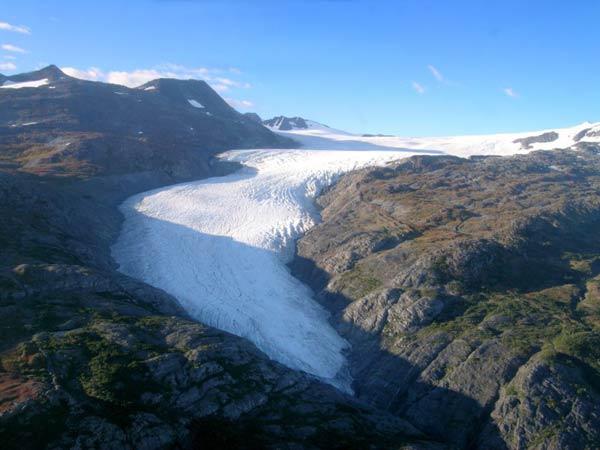Melt of Small Glaciers Could Have Outsize Effect on Sea Level


The vast ice sheets that stretch across Greenland and the Antarctic are the most obvious suspects when it comes to the connection between melting ice and rising seas. However, it turns out that the culprits behind most current sea level rise are much smaller and far more ubiquitous.
Smaller glaciers and ice caps strewn around the planet from the Alps to New Zealand to the Caucasus account for about 40 percent of the entire sea level rise that scientists observe today, said Valentina Radic of the University of British Columbia in Canada, leader of a new study that examined the startlingly major role these relatively tiny ice chunks will play in rising global sea levels .
Using climate models, Radic found that these smaller mountain glaciers and ice caps may contribute more than 4.5 inches (12 centimeters) to world sea level rise by the beginning of the next century, even though they contain less than one percent of all water on Earth bound in glacier ice.
Those projections don't include meltwater from the gradually dwindling Greenland and Antarctic ice sheets , or the expansion of ocean water as it heats up both significant factors in projected sea level rise.
Radic and colleague Regine Hock of the University of Alaska used temperature and precipitation projections from 10 global climate models used by the Intergovernmental Panel on Climate Change (IPCC) for their research.
While Radic's projections were only slightly higher than IPCC projections by about a centimeter she said her results took a more detailed look at the phenomenon of smaller glacier ice melt.
"This allows us to get a better picture of projected regional ice volume change and potential impacts on local water supplies, and changes in glacier size distribution," Radic said.
Get the world’s most fascinating discoveries delivered straight to your inbox.
The largest contributors to projected global sea level increases are glaciers in Arctic Canada, Alaska and landmass-bound glaciers in the Antarctic.
Overall, the outlook is bleak for small glaciers everywhere. By 2100, most are projected to be half the size they are today.



